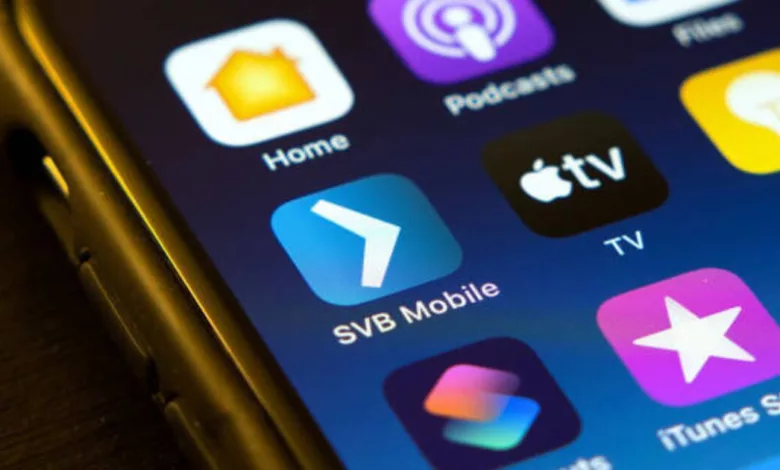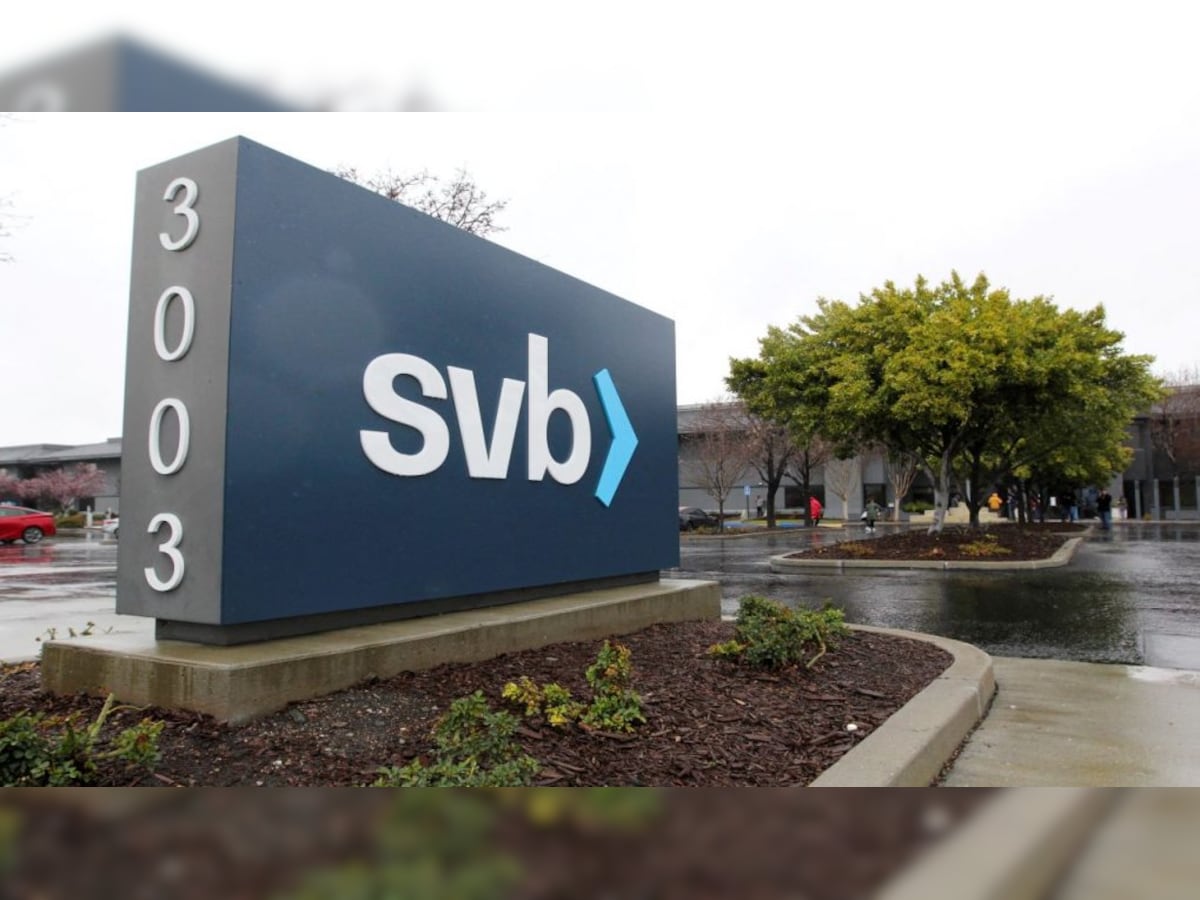SVB collapse: US Treasury monitoring a ‘few banks very carefully’
California Banking Regulator dissolved the SVB and appointed the FDIC as the trustee protecting depositors at the startup-focused lender. The bank's collapse was the largest since the 2008-2009 financial crisis.

US Treasury Secretary Janet Yellen expressed “full confidence” at a meeting with banking regulators investigating the bankruptcy of SVB Finance Group. in their ability to respond to a crisis and the resilience of the country’s banking system, according to the Treasury Department. California Banking Regulator dissolved the SVB and appointed the FDIC as the trustee protecting depositors at the startup-focused lender. The bank’s collapse was the largest since the 2008-2009 financial crisis.
When asked about the fate of SVB during her testimony before the US House of Representatives on Friday, Yellen said, “I am closely following some recent developments affecting several banks. And that is and should be a concern when banks suffer financial losses”. The largest retail bank suffered this catastrophe to go bust since the 2008 financial crisis.
After the bank’s announcement, the crisis erupted within just 48 hours, which not only caused its shares to lose more than 80 billion in the market but also sparked panic among depositors and customers – many startups and private equity firms – who were in danger of withdrawing their money.
Subsequently, the ailing lender’s assets were seized by the United States Federal Deposit Insurance Corporation (FDIC), along with total customer deposits of around $175 billion. Deposits up to $250,000 are usually protected by the regulator. The US regulator said it was acting to “protect insured depositors”; and that bank branches will reopen and customers with protected accounts will be able to access their money “no later than Monday morning”. He also said uninsured depositors would receive the proceeds from the sale of the bank’s assets.
![]()
How did it happen?
With plenty of cash, Silicon Valley Bank bought a sizeable amount of bonds more than a year ago. Like other banks, it kept part of the deposits and invested the rest in hopes of profit. This was short-lived, however, as the Federal Reserve continued to raise interest rates in a bid to curb year-on-year inflation. In addition, the start-up financing freeze puts pressure on the bank’s customers and forces them to withdraw money.
SVB was forced to sell some of its shares at a time when their value was falling to meet these demands. The bank announced an unexpected loss of nearly $2 billion on Wednesday. What hasn’t worked yet? In addition, inflows and outflows of SVB deposits have changed due to customers burning their money and stopping fundraising through fundraisers or public offerings. Because of the Fed’s rate hikes, which have pushed up deposit rates, it has also become much more expensive to borrow new deposits. Deposits fell from around USD 200 billion at the end of March 2022 to USD 173 billion at the end of 2022.
A stronger decline in deposits is expected this year. The SVB forecast an average drop in its deposits in the single-digit percentage range in 2023 as of January 19. However, a drop in the low double-digit percentage was expected as of March 8. The Watershed Moment SVB announced Wednesday that it had sold a significant portion of its securities, totaling $21 billion, at the time of the sale at a loss of about $1.8 billion after taxes. To give it the flexibility to meet expected outflows and continue funding new loans, it has attempted to reset its interest income to today’s highest yields. He also wanted to raise $2.25 billion in the capital.
Why did SVB fail?
But the announcement sent the stock markets into a tailspin. According to the Wall Street Journal, the announcement of the stock sale drove the stock price down, made it harder to raise funds, and forced the bank to abandon its plan to sell the stock. It has also been reported that venture capitalists have started directing their holding companies to withdraw funds from the SVB. Customers wanted to withdraw $42 billion worth of deposits Thursday, or about a quarter of the bank’s total, according to a report filed by California authorities. As a result, the money ran out.
What will happen next?
The FDIC said Silicon Valley Bank offices will reopen on March 13 and all insured depositors will have full access to their insured deposits through Monday morning. However, as of the end of 2022, 89% of the bank’s $175 billion in deposits were uninsured, according to the FDIC. The number of uninsured depositors has not yet been calculated by the US regulator, but it said uninsured depositors will receive an advance on dividends in the coming week.
Applicants receive a document called “Certificate of Acceptance”; for any remaining unsecured cash and the FDIC sells SVB’s assets, they could also receive future dividend payments. FDIC reportedly identified another bank looking to merge with Silicon Valley Bank over the weekend, Reuters reported, citing people familiar with the development. Though the FDIC plans to arrange a merger by Monday to protect unsecured deposits, no deal is guaranteed, the sources say. Since 2008, America’s largest bank has gone bankrupt.
Following the collapse of Washington Mutual at the height of 2008 the financial crisis, followed by the Silicon Valley Bank scandal, two other major US commercial banks went bankrupt. Until its bankruptcy, Washington Mutual was the country’s largest savings and loan bank. The systemic banking crisis resulted from the collapse of Washington Mutual and other large investment banks such as Lehman Brothers and Bear Stearns, as well as several small and medium-sized regional banks. Industry experts predict that the bankruptcy of Silicon Valley Bank, the biggest seller in the startup ecosystem, will harm the startup environment in India and has caused a lot of uncertainty in the market.

The closure “is having an impact on businesses around the world”; said Rajeev Chandrasekhar, Minister of State for Electronics and Information Technology, who announced on March 12. He continued that he will be meeting with Indian startups this week to learn more about the impact on them and how the Modi administration could help them. According to Ashu Garg, a prominent Silicon Valley venture capitalist and early-stage investor for over two decades, “I think this is a major achievement for Indian entrepreneurs. I hope the matter is resolved”.
The FDIC was named trustee of Silicon Valley Bank (SVB) after California‘s Department of Financial Protection and Innovation closed the country’s 16th largest bank, Silicon Valley Bank, on Friday. Silicon Valley Bank has total assets of approximately $209.0 billion and approximately $175.Total deposits as of December 31, 2022, were $4 billion, according to a statement from the FDIC. At the time of closure, the number of deposits exceeding the insurance limits was not known. The FDIC will calculate the number of uninsured deposits after collecting more data from the bank and its customers.
“Silicon Valley Bank has effectively offered banking services and has been a real boost to the Indian start-up sector. Being one of the few organizations willing to partner with Indian banks, most of the Indian startups operating in the United States hire this bank. Many banking institutions don’t want to do business with international customers,” says Garg, a graduate of IIT Delhi.
“This has allowed SVB to work with Indian companies that don’t have American employees. So it will be very difficult for Indian [entrepreneurs] when they [leave],” he replied when asked. SVB has been one of the most popular banking options for startups and the tech sector in Silicon Valley in recent years, largely due to its industry knowledge and flexibility in many areas that fit the startup ecosystem. experts estimate that a significant number of these founders will be affected as early as next week in terms of employee base payments and salary payments, as one in three Silicon Valley companies is founded by Native Americans.
India’s Stake On SVB
Similarly, many Indian companies do not have a single employee or office in the US that opened accounts with Silicon Valley Bank because they made it possible with little regulatory intervention and a friendly approach. According to Mr. Garg, the collapse of the SVB will seriously affect American Indians and their businesses. “Now you have all these loans. You don’t know what will happen when the loans are sold and repaid Also, Silicon Valley Bank is a major player in the fintech industry…As a result, you may have noticed that payroll company Rippling was unable to post payroll due to its house bank, Silicon Valley Bank”.
According to the venture capitalist, global and US banking systems could be affected. After a meeting to assess the impact of the bank’s collapse, a group of Silicon Valley venture capitalists said recent developments were disappointing and worrying. A joint statement from early-stage investor and Navin-American Navin Chaddha states: “We would strongly support and encourage our portfolio companies to refinance with them in the event of SVB purchases and adequate funding.”; it has been confirmed. “The last 48 hours have unfolded in ways we could never have predicted, but now is the time to help our partners and we truly believe that our businesses should work with SVB once we are aware of their arrival and are safe”.
Congressman Ro Khanna, a Native American who represents Silicon Valley in the House of Representatives said the FDIC needs to investigate the CEO’s recent short sale and there should at least be a retraction with penalties for gains made. insisted the money go to charities like Sunnyvale Community Services, fear losing SVB deposits and having to pay mortgages.
Vivek Ramaswamy, an Indian-American presidential candidate, has argued that people like Prince Harry and Meghan Markle should not be supported by American taxpayers. “It is your prerogative to make deposits with Silicon Valley Bank. But last month I heard nothing from the technological intelligentsia that has asked for help for East Palestine,” he noted. The head of the Consumer Financial Protection Bureau, Native American Rohit Chopra, is hired to represent the interests of the public in the case.
edited and proofread by nikita sharma






